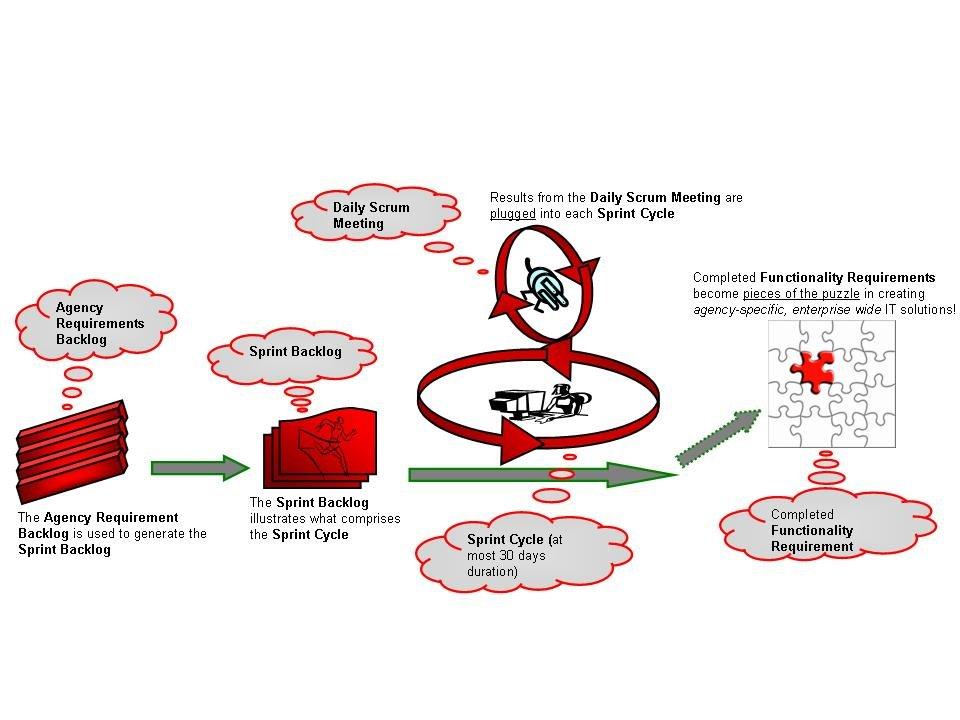“Scrum” Agile System/Software Development Life Cycle Methodology
DVBE Partner provides COTS, MOTS, custom software implementations, and website design services using following the “Scrum” System/Software Development Life Cycle Methodology. We will work closely with agency stakeholders to ensure that our applications meet or exceed the business needs of our customers. DVBE Partner’s goal is to allow our understanding and expertise in the laws of scalability to streamline your business’ operation and process flow.
DVBE Partner’s Scrum Agile SDLC approach takes into account all standard phases of an SDLC, such as:
- Initiation/Planning – Establishes a high-level view of the intended project and determines its goals. Once the ideal system is engineered or tuned, the development team studies the software requirement for the system.
- Requirements Gathering Analysis – This step involves analyzing the system in different pieces to analyze the situation, analyzing project goals, and determining what needs to be created. Requirements gathering may require client SME’s to acquire detailed and accurate requirements.
- Design – The design stage takes as its initial input the requirements identified in the approved requirements document. For each requirement, a set of one or more design elements will be produced as a result of interviews, workshops, and/or prototype efforts.
- Build/Code Generation –The design must be translated into a machine-readable form. The code generation step performs this task. If the design is performed in a detailed manner, code generation can be accomplished without much complication. Programming tools like compilers, interpreters, debuggers etc. are used to generate the code.
- Integration/Testing – Brings all the pieces together into a testing environment then checked for errors, bugs and interoperability. Once the code is generated, the software program testing begins. Different testing methodologies are available such as: data set testing, unit testing, system testing, integration testing, regression testing, automation testing, user acceptance testing, and performance testing.
- Acceptance, Installation, and Deployment – The final stage of initial development, where the software is put into production and runs actual business.
- Operations and Maintenance – The deployment of the system includes changes and enhancements before the decommissioning or sunset of the system. Maintaining the system is an important aspect of SDLC. As key personnel change positions in the organization, new changes will be implemented, which will require system updates.
The entire scope of the project duration is broken down into a set number of iterations (in this case, a standard work week = one iteration). Following the Agile implementation approach, DVBE Partner will work with agency stakeholders and SME’s during the Initiation and Planning phases to develop a prioritized list of features/configuration points to be included in the [system name].

To actually develop, test, and deploy all features and points of configuration into the [system name], DVBE Partner will following Agile’s Scrum approach. Of all the Agile methodologies, Scrum is unique because it introduces the idea of “empirical process control.” That is, Scrum uses the real-world progress of a project — not a best guess or uninformed forecast — to plan and schedule releases. With the Scrum Agile approach, projects are divided into succinct iterations. At the end of each project iteration, stakeholders and DVBE Partner team members will meet to assess the progress of a project and plan its next steps. This allows a project’s direction to be adjusted or reoriented based on completed work, not speculation or predictions.
The Scrum Agile approach breaks a software development into a series of iterations or sprints. Each sprint lasts at most 30 days. During each sprint, a set of features are incrementally added to the product under development and a potential release of software is created.
The requirements for the DVBE Partner solution to be developed are held in a Requirements Backlog. Then, using the prioritized requirements backlog, we will develop the Sprint Backlog – a methodical approach to which features are “scrum developed” first. Daily Scrum Meetings keep agency stakeholders in the development loop. At the start of a sprint, a sprint planning meeting is held. During the meeting, a set of requirements from the backlog are picked for implementation in the next sprint. The development team decides which requirements they can commit to developing during the next sprint.
At the end of a sprint, a sprint retrospective meeting is held to discuss which elements of the process could be improved. Further sprints are then performed until the Requirements Backlog is empty and the solution is ready for deployment.










